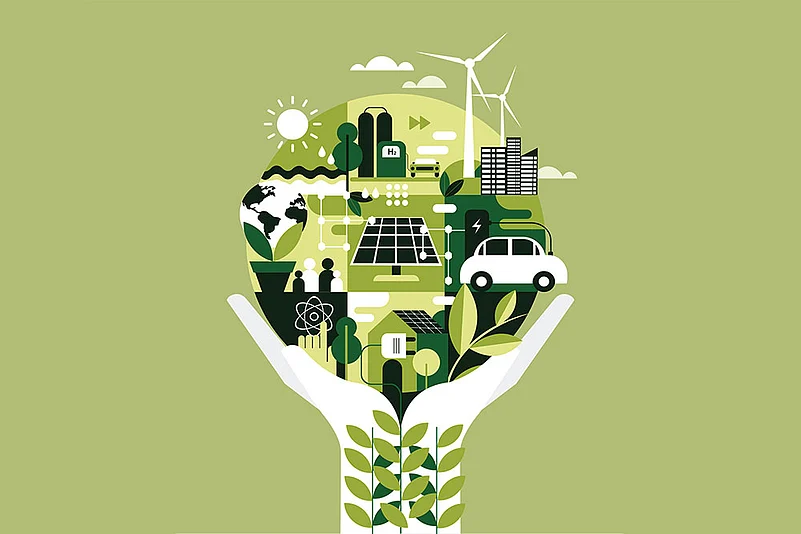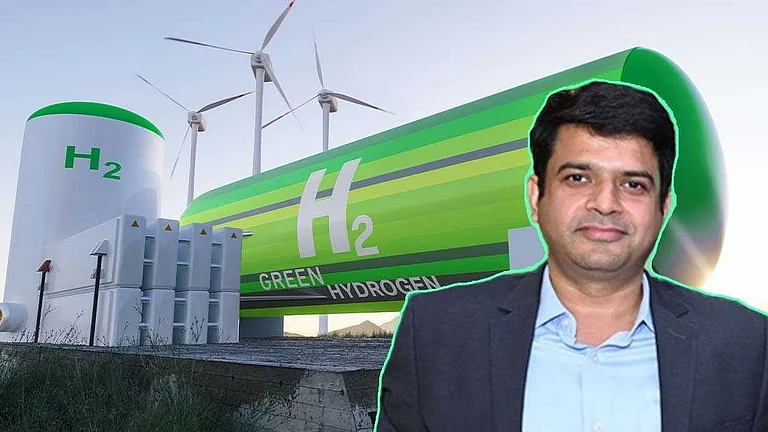The world needs more energy than ever before. As populations grow and economies expand, energy demand is skyrocketing. Yet this rising demand must be balanced against the urgent need to reduce carbon dioxide emissions and address environmental challenges.
Carbon-free Option
Green hydrogen is uniquely positioned to link renewable electricity with various applications. As a complement to electrification, bioenergy and direct renewable energy use, green hydrogen offers versatility in addressing hard-to-decarbonise sectors, such as heavy-duty transport, steel, heating and power production.
Unlike fossil fuels, green hydrogen’s potential is intrinsically tied to renewable energy sources like solar and wind, whose potential far exceeds global energy demand today and in any future scenario. Most importantly, green hydrogen is the only genuine zero-carbon option for hydrogen production.

Globally, green hydrogen is becoming the centrepiece of the international climate agenda. Current efforts to reduce greenhouse gas (GHG) emissions are insufficient to limit global warming to below two degrees Celsius by the end of the century. As a result, nations are embedding green hydrogen into their decarbonisation strategies.
In 2019, only five countries had a hydrogen strategy; by 2020, that number grew to nearly 20, with leaders like Australia, Canada, the United States, Germany and Japan spearheading efforts.
With rapidly declining renewable energy costs, India has a unique opportunity to lead the global hydrogen transition. Solar electricity tariffs in the country have reached record lows of Rs 1.99 per kWh, making green hydrogen production increasingly cost-effective.
India is also on its path to becoming a global leader in clean energy by implementing a clear strategy to reduce green hydrogen prices to below $2 per kg by 2030, making it competitive with traditional energy sources.

Scalable and Versatile
Green hydrogen is the gold standard of hydrogen production—clean, sustainable and infinitely scalable. It is produced by splitting water into hydrogen and oxygen using electricity from renewable sources such as wind or solar. This process, known as electrolysis, is entirely carbon-free, provided the electricity used is renewable.
The journey from water to green hydrogen involves three key steps.
The first is electrolysis, in which electricity powers an electrolyser and separates water into hydrogen and oxygen. This is followed by compressing the hydrogen and storing it for distribution. Finally, the stored hydrogen is used across industries to fuel zero-emission vehicles, power industrial processes or be integrated into energy grids.
The Hydrogen Spectrum
Hydrogen is not a monolithic energy source—it is classified based on production methods and carbon footprints.
Green hydrogen is produced by splitting water using electricity from renewable sources such as solar, wind or hydropower. This is the cleanest form of hydrogen, emitting zero carbon dioxide. It stands out as the only genuinely zero-carbon option for hydrogen production. It is crucial for decarbonising hard-to-electrify sectors like heavy industry, transport and power generation.
The high cost of production due to expensive electrolysers and renewable energy infrastructure requires significant scaling to become cost competitive.
Blue hydrogen is made from natural gas via steam methane reforming (SMR) or auto thermal reforming (ATR) with carbon capture and storage (CCS). However, at best, CCS efficiency is limited to 85-95%. This is a transitional solution leveraging existing natural gas infrastructure and reduces emissions compared to grey hydrogen. It is suitable for countries with abundant natural gas reserves. Methane leaks during gas extraction and transportation diminish its environmental benefits.
Gray hydrogen is produced from natural gas or coal through SMR or ATR without capturing carbon dioxide emissions. It is economically viable due to established technology and infrastructure and widely used in industries such as ammonia synthesis and oil refining.
High greenhouse gas emissions make it unsuitable for long-term climate goals, as it emits approximately 10 tonnes of carbon dioxide for every tonne of hydrogen produced.
Pink hydrogen is produced via electrolysis using electricity from nuclear power. It offers reliable and consistent energy for hydrogen production, is unaffected by weather or time of day and is valuable for countries with established atomic infrastructure. Its drawbacks are the high capital costs of nuclear plants, concerns about nuclear safety, waste disposal and public acceptance.
Thus, green hydrogen’s scalability and zero-carbon credentials make it critical to a global energy transition.











